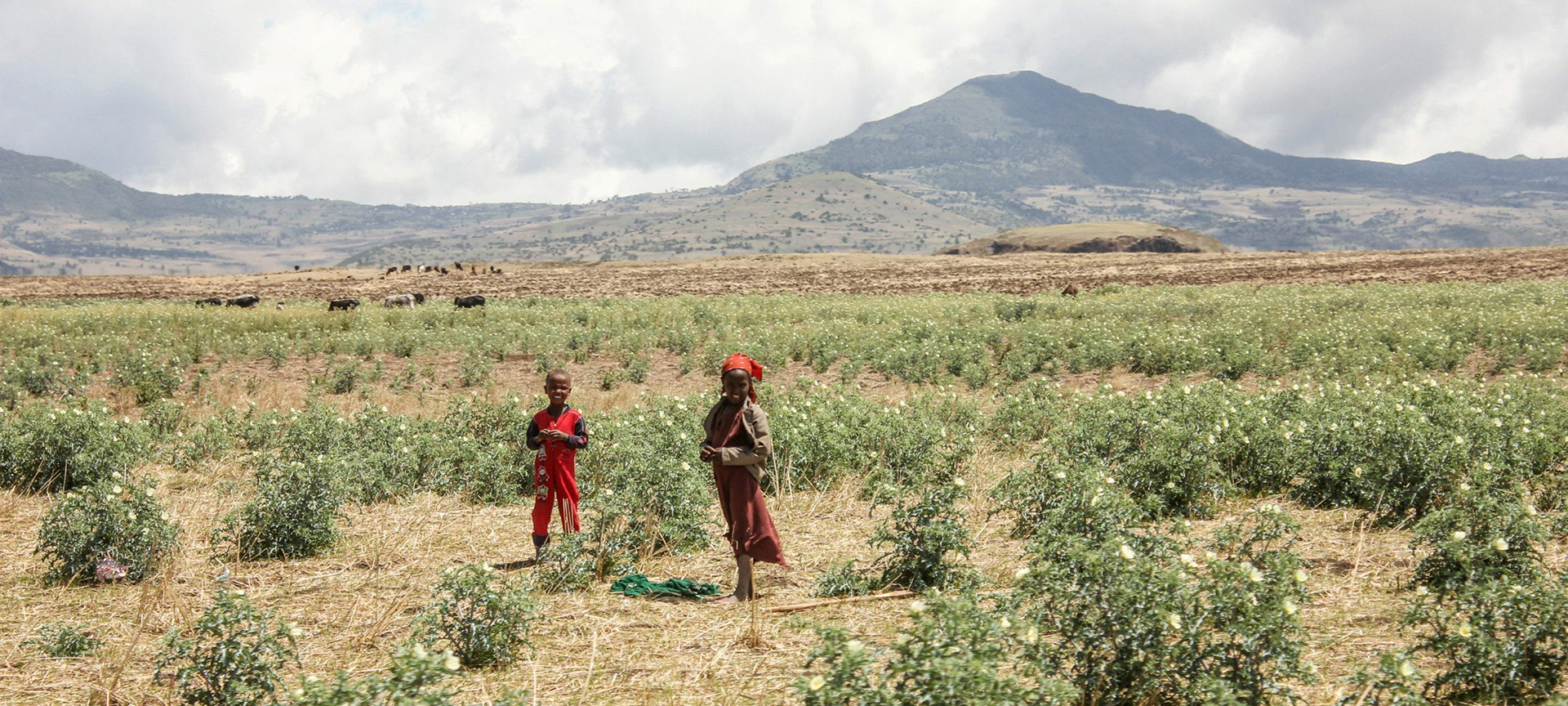In March, imagine1day’s new communications officer, Candice Vallantin, moved to Ethiopia. This what she wrote after her first trip to the field.
Beyoncé’s Drunk in Love is playing on the radio when I head out of Addis Ababa and into the field with our team for the first time. I consider it a good omen.
It’s 10 am on a Thursday and it takes us at least an hour to weave through the city’s traffic before the smog and dust and jagged concrete skyline give way to a flat expanse of yellow grasslands pocked with tufts of trees and shrubs. A belt of green grass snakes along roadside ditches, coaxing emaciated horses, wobbly oxen and disheartened donkeys.
We’re heading to the Bale Zone, in the region of Oromia, where imagine1day is working with 103 communities to enroll 21,945 out of school children by December 2016.
This is a daunting task.
As I’m about to discover, when there are classrooms, they tend to be of the packed dirt and straw variety with no windows and thus little light. Sometimes, they consist of log structures with no shade. In some cases, there is no water, and half the time there are no bathrooms—or pit latrines as they are called here—which are basically holes in the ground surrounded by four walls.

This is a Grade 3 classroom in Walkite village.
This daily reality helps to explain the stats. Eighty-seven per cent of students start school late. Of those who enroll, 20 per cent are likely to drop out before grade 8.
Considering the conditions of their schools, it’s no wonder students aren’t motivated to attend. There are at least 54 students for each teacher and in many cases there are no desks or chairs for students to sit on. If they are lucky, they can squeeze themselves onto a log. If they are late, they will either stand or they will sit on a dusty and sometimes muddy dirt floor.
For many reasons, girls are fortunate if they get to attend classes.
Sometimes it’s a question of access: most of us can empathize with parents who don’t want their 6-year-old girls to walk alone for an hour through the bush and across rivers to get to school.
Other times it’s logistics: 50 per cent of schools have no separate pit latrines for boys and girls.
Then of course, there is tradition: girls are usually married when they are 15 years old, or as soon as they get their periods, a fact they cannot hide long without private pit latrines.
As a result, there are only six girls enrolled for every ten boys on average in Dello Mena and Meda Welabu, two of the districts we work in, and gender parity is even more abysmal in the most remote communities.
I have read all these Ethiopian-government reported statistics (which are probably underestimates), but I still don’t really know what to expect. I do, however, have many questions.
How can any organization change centuries-old traditions with a few days of training? What exactly, is “capacity building”? How do you convince wrinkled, illiterate religious leaders that girls’ education is important? How do you ensure that the impact you have in a community is sustainable in the long run? Do these communities even want us there, and if so, why should they trust us of all people?
More importantly, as the only expat in a ground team that consists entirely of Ethiopians, who the hell am I? Why should I have the privilege of telling the story of a people whose language I can barley pronounce, let alone understand?
These are some of the questions that cross my mind as I drive through the Ethiopian countryside for the first time.
When I accepted this position as imagine1day’s communications officer in February, I didn’t really know what development actually looked like on the ground.
Having spent my first week in the field, I am starting to get a clearer picture, but I still have many questions. Over the next 18 months, my goal is to craft some stories with words, pictures and videos to demystify the work imagine1day is involved in.
Do you want to know what development looks like? Do you have questions you would like me to answer about how imagine1day works?
With the less than stellar reputation non-governmental organizations have developed over the years, we welcome your healthy skepticism and curiosity.
So let’s get started. Send me an email and shoot me some questions. In the mean time, I’ll be here, trying to remember to eat with my right hand instead of my left, stuttering my way through Amharic classes, and learning how to order a beer.
See you soon,
Candice
[email protected]

